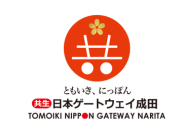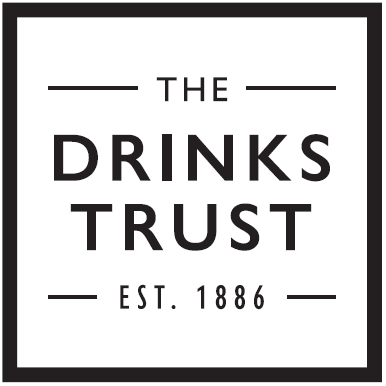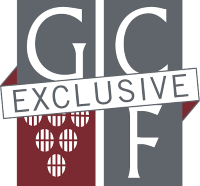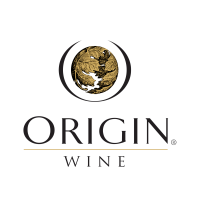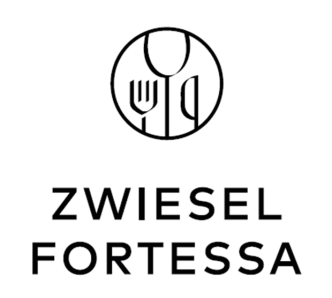They set up as JSC Friends’ Cellar in 2008 to make wines in Georgia for themselves. But now they are producing about 40,000 bottles a year from 27ha of vines and launching them under the Ikano Estate brand.
Ikano has spent the past five years converting its blocks of Saperavi, Mtsvane, Kisi, Rkatsiteli, Khikhvi, plus small plantings of Chardonnay and Sauvignon Blanc, to organic farming. All the grapes are handpicked into 15kg boxes, sorted on Bucher-Vaslin vibrating tables before destemming and crushing. Average yields sit around 5-6 t/ha.
Chief winemaker Davit Gamgoneishvili, who has been running the cellar since the 2019 vintage, uses 20 qvevri, plus tanks and French oak barriques, to bring the wines to life.
To find out more, Canopy contacted shareholders Peter Reinhardt, Jay Nibbe, Ruslan Khoroshvili, Zhanna Dobritskaya, and Karl Johansson, general director Irakli Khundadze, and Davit.
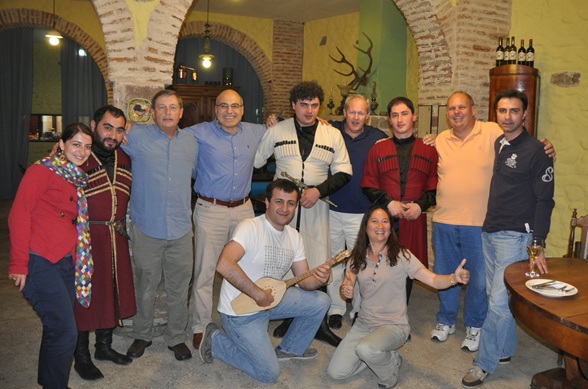
Canopy: The shareholders have great experience in the world of finance – why invest in a winery?
Peter Reinhardt: “It’s true that all Ikano Estate shareholders are, or have been, partners at EY. Much more than that, we also have long been friends, having worked together or otherwise been connected to Georgia and other surrounding countries. About 15 years ago, in the wake of some rough geopolitical events in the region, a group of EY partners in a bar in Tbilisi fell into a discussion about what we could do to maintain and strengthen our friendship with each other – above and beyond our enduring partnership within EY itself. As so often happens, an idea was born and jotted down on the back of a napkin that night – the idea of making some wine together. Initially it was merely the idea of producing just enough for our own enjoyment. However, gradually that idea grew over the years and, before you knew it, we had acquired 27 hectares of land in Kakheti, built a château from scratch, and expanded to over 20 shareholder friends of 12 different nationalities. So, you could say that our origin story is the story of our friendship and our recommitment to it, and that the winery was essentially a coincidental outcome of that. Over time, though, Ikano Estate has for many grown to replace even EY as the single most important platform bringing us together, especially for those of us who have retired from EY at this point.”
It’s a big investment with a slow return – how do you justify it and when do you think you will see a profit?
Jay Nibbe: “Well, for us, this venture is about much more than simply making money. We have that more fundamental purpose from which it all started and which still sustains us and lights the way forward, which is again that friendship and just wanting to do together something both good and enjoyable. Having said that, at heart we are also a bunch of businesspeople with accounting mindsets, and so, yes, we do have an eye on getting to profitable returns. Particularly when you consider, to your point, the considerable investment that we have ploughed into the business over the years. Like everybody else, we’ve experienced geopolitical and other unexpected shocks along the way. Covid, for example, certainly set us back at least a couple years, both due to the steep fall-off in tourism into Georgia as well as the effects that we saw on global trade patterns. With that, depending of course on whether the pace of sales, particularly export sales, increases at the rate that we hope for, we do see a return on our investments beginning to roll in as soon as two years from now. This follows our already having opened up import channels into both the EU and North America, with the UK expected to follow this year as well!”
Why did you choose Georgia?
Karl Johansson: “You could say with a great deal of fairness that we didn’t choose Georgia, but rather that fate ended up choosing Georgia for us. All the initial founders were wine drinkers and familiar with Georgian wines which were prevalent throughout the CIS countries. The opportunity to leverage our love of wine, the history of Georgia as the birthplace of wine, and the phenomenal people and welcoming arms of the country made it a perfect match. While our initial investment plans were modest, that combination of great winemaking and the hospitality of the Georgian people made it easy to grow the business.”
It’s an unusual business model – please explain how it works and who's involved.
Ruslan Khoroshvili: “In my view the business model itself is not that unusual, although we do very much believe we have an unusually talented group leading the business, including Irakli Khundadze our general director as well as our chief winemaker, Davit Gamgoneishvili, truly one of the best oenologists you could hope to find anywhere. The other thing which is highly unusual is our governance and the profile of the shareholders. We are, after all, a very international group hailing from 12 different countries, something absolutely unique amongst any of the other wineries that you will find in Georgia. For that matter, you would be hard pressed to find that anywhere else in the world.”
Are you still all friends?
Peter Reinhardt: “You could be forgiven for thinking that we might not be. The only thing which might outstrip the interesting pairings for our wines are the interesting pairings we have within the shareholder group itself: for example, both Armenian and Azeri, both Ukrainian and Russian, and even both Brit (yours truly) and French! And look, I won’t pretend that geopolitical conflict hasn’t led at times to tension in some of those relationships. But at the end of the day, this business was founded in the very first place as a way for our friendships to overcome challenges of that type, and that same spirit has lived on with our friendships showing a remarkable resilience come what may. Quite apart from the wine business, many of us to this day regularly hang out together and even holiday together.”
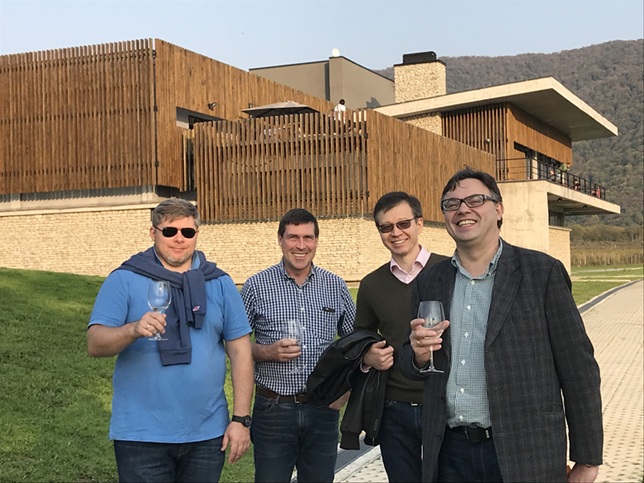
How easy is it to make decisions with so many investors from different cultures?
Marchello Gelashvili: “Actually, it’s not that difficult. First of all, we really are friends and we get along with each other inside the business as well as we get along outside. Secondly, we have an executive committee consisting of six which gets together far more frequently than the wider shareholder group. Usually at least once a month. In the executive committee we are able and empowered to make most of the decisions necessary to support our talented management team in the day-to-day running of the business. Ironically, if anything, the bigger challenge is not the 12 different national cultures which we represent, but rather the one corporate culture that we all have in common! As current or former partners at EY we have all been used to clients’ turning to us for our expertise and points of view. It’s what we are famous for and a habit that you can’t easily shake! So, each of us regularly brings a unique and strong point of view on the best solution for any given business challenge facing Ikano Estate as well. Trying to work through all those amazing, but at times mutually exclusive, shareholder ideas in order to arrive at consensus or at least compromise, is probably the biggest ‘cultural’ challenge!”
What are the pros and cons of this business model?
Jay Nibbe: “I think the biggest pro lies in the diversity of our shareholder group and its EY background. As a group we have incredibly extensive knowledge of, and connections to, numerous important markets around the world, including markets really key for wine and wine imports, such as the UK, the US, France and Italy. We are also imbued in EY’s passion for quality in everything we do, something which we have certainly carried over from professional services into our winemaking. The biggest con again is probably connected to the diversity of opinions that we have across the shareholder group and reconciling those in a way which allows us to move forward whenever we are making major business decisions.”
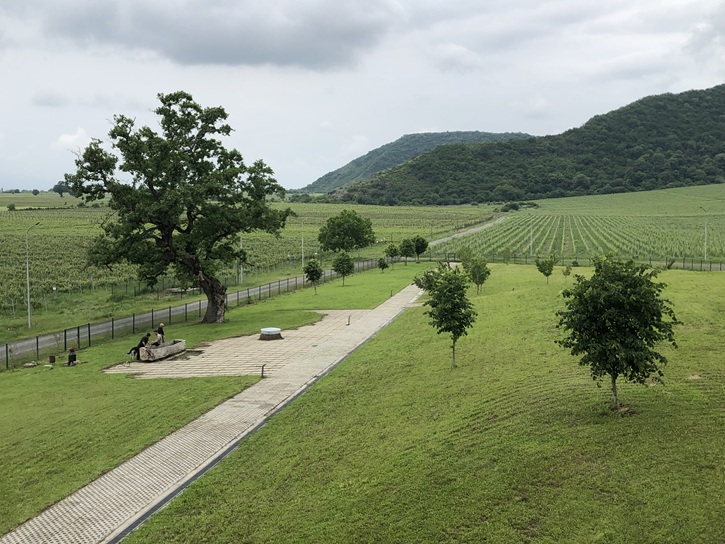
Tell us about the vineyards and why you have chosen organic viticulture?
Irakli Khundadze: “We are the owners and stewards of approximately 27 hectares, most of which are adjacent to our château in the Shilda area on the gentle northern slope of the Alazani Valley. A few of our hectares are also in the historic centre of the Kinzmarauli region, just a few kilometres away from the Château. In terms of our grapes, we have really been focusing for the most part on native Georgian varietals such as Saperavi, Rkatseteli, Mtsvane and Khikhvi. We also grow a modest amount of Chardonnay, which we historically used in some of our blends, but nowadays we sell those grapes at each harvest and are gradually phasing out in favour of those native varietals.
“Why have we chosen organic viticulture? Well, first of all, we are very mindful that, apart from the brief aberration of the Soviet period, in the 8,000 years that winemaking has been happening in Georgia there has overwhelmingly been of course an organic approach by definition, and we wanted to return things to the historical traditions upheld for millennia. Secondly, many in the shareholder group and in my team are very much inclined towards consumption of organic foods and drink in our own daily lives, and it only makes sense to employ organic production methods ourselves. Last, but not least, we are mindful of the importance that other consumers in so many markets, including in the UK, attach to organic approaches, and we want to fulfil that desire in the market. All the more so since it is exceedingly rare to find other wine producers in Georgia who are certified to EU standards for organic viticulture, something which we’ve attained in 2025 and is truly a major differentiator for us.”
Tell us about the winemaking – what are you doing that’s different?
Davit Gamgoneishvili: “Our approach to winemaking is very deep, exercising precise control at every step along the way. Most fundamental is hygiene: everything our wines touch is super clean and sanitized. The first step is choosing carefully our harvest date, based on perfect maturity of the grapes and chemical parameters. This we monitor closely from the beginning of August once a week, and in September at least every 2-3 days to get it just right. The next step is sorting during grape picking, to eliminate contaminated clusters which might be showing signs of fungus, hail or sun damage. Next comes the vibrating sorting table where we sort again clusters and berries, deliberately by hand. Afterwards we turn to destemming and crushing very gently, and transferring grape must into qvevri, which is why we must do very precise sorting.
“The fermentation process is also controlled very closely. Twice a day we do a lab analysis of sugar density and temperature control, and we are using a cooling system in the qvevris. We also use carbon dioxide as a gas for elimination of oxygen before the wine goes to tank or qvevri. In our style of orange wine, we aim to make softer and lighter-tannic wines with intense and fresh aromas. In contrast to more traditional Georgian skin contact wines, which can get quite bitter, we keep wine with skin contact only around 10-14 days and then rack off. As we are an organic certified winery, we shy away from intervening in winemaking with industrial products. We want to underline our terroir in our wine styles. Also for wine stabilization we seek to do it naturally, as skin contact helps to stabilize against protein haze. And for crystal stabilization we are simply use cooling.”
Peter Reinhardt: “Let me interject just to add that Davit himself is a great example of what we’re doing differently from others. He is an exceptionally bright example of the small coterie of new generation winemakers coming up through the ranks in Georgia, and it is no exaggeration to say that Davit’s brilliant mind – and nose, and palate – outshine even the passion which we shareholders bring to this venture as the number one ingredient behind the amazing wines that we are privileged to produce under the Ikano label.”
You make wine in steel, oak and clay – why and what do the results show you about your terroir?
Davit Gamgoneishvili: “Using all three vessel materials is very interesting in terms of creating quite diverse wines, which in turn is very important for making blends. As regards our terroir, we are in a warm climate area and so wines tend to be more phenolic, darker in colour, with more mature fruit aroma profiles, and in that case oak and qvevri are excellent as winemaking vessels. Oak tannins and aromas create great combinations with our Saperavi tannins and aromas. Both of them play big roles in micro-oxygenation, which is a key factor for warm-climate wines for polymerisation reactions, which make the wine softer and more rounded on taste, developing and forming well the aroma profile. We are still using inox for classical wines and some of our reds.”
What modern twists have you added to the traditional way of winemaking in Georgia?
Davit Gamgoneishvili: “While producing organically and applying a deliberately manual approach to grape selection etc, we are also trying to make our cellar and production more modern, because to be time efficient and quality-oriented modern technologies and approaches are sometimes key factors. Cooling down qvevris and tanks during fermentation are a modern thing and play a key role in creating orange wines with fresh fruit aroma profiles. We have also acquired modern equipment such as our sorting table and our Bucher pneumatic press. We use only inox materials in almost every operation, which allows for easy cleaning and the avoidance of rust or excess moisture. Also using carbon dioxide gas for keeping the air around wines anaerobic, using peristatic pumping for gentle wine transfers.”
About 100 metres from the winery are the remains of a cellar from the 1ˢᵗ-century AC. What have you learned from it?
Peter Reinhardt: “The number one thing which we have probably learned is respect for the generations who have gone before us. When you wander through the ruins of the ancient city of Nekresi in the woods just at the back of our château, including all the stone winemaking troughs to be found there alongside the remains of temples predating Christianity, you are, of course, struck by the sheer ancientness of that city, and of the civilization that once thrived in it contemporaneously with the Roman Empire also then at its peak hundreds of miles to the west. And then you remember that, as ancient as all this is, this represents only a small fraction – about ¼ – of the archeologically documented history of winemaking in Georgia. It is both incredibly humbling and incredibly exhilarating to be able to carry on such a tradition on the very same ground on which winemaking itself started some 8 millennia ago.”


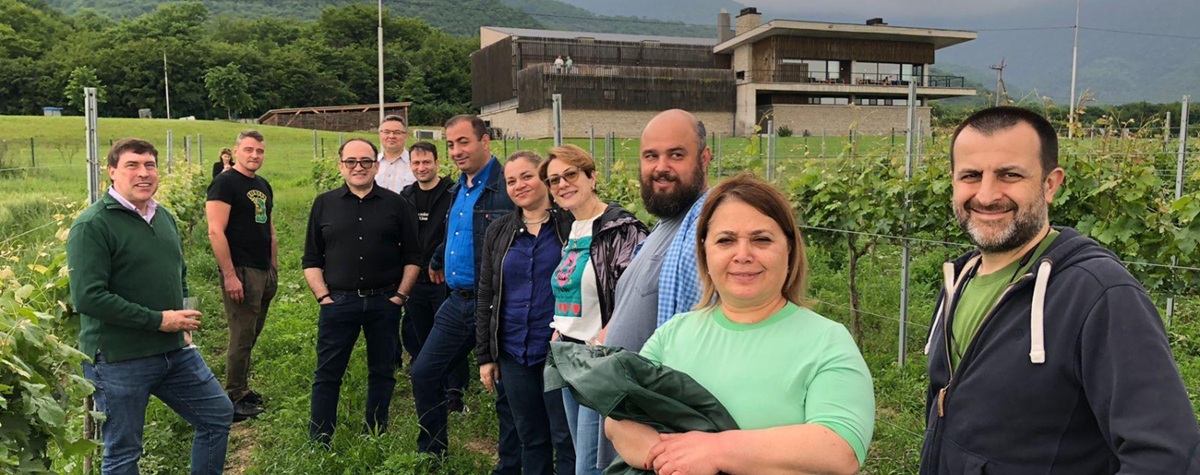
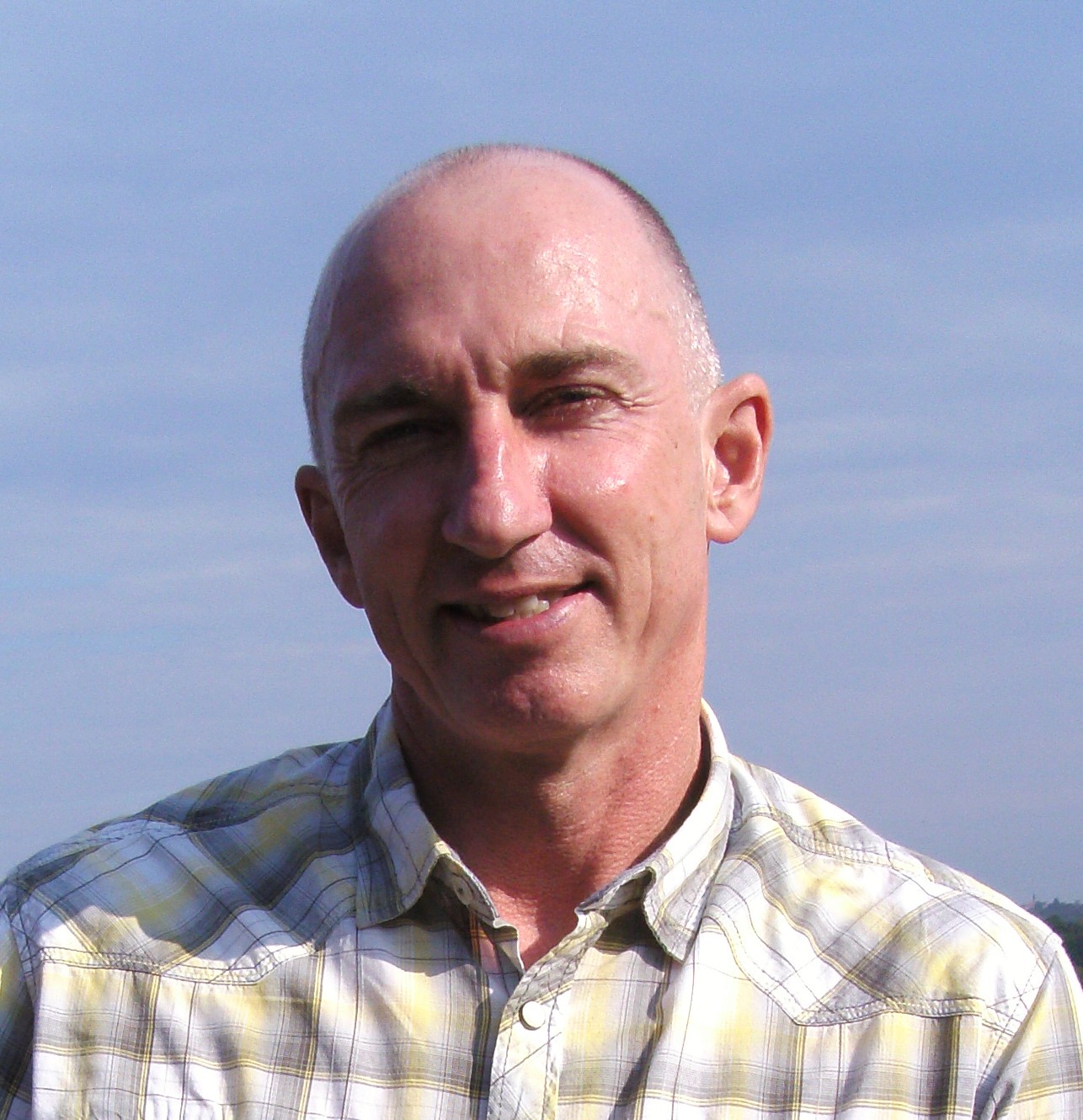



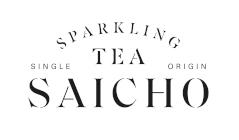

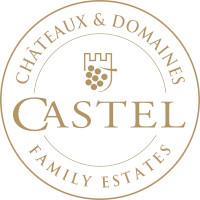


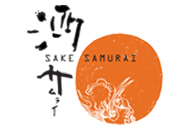
.png)
